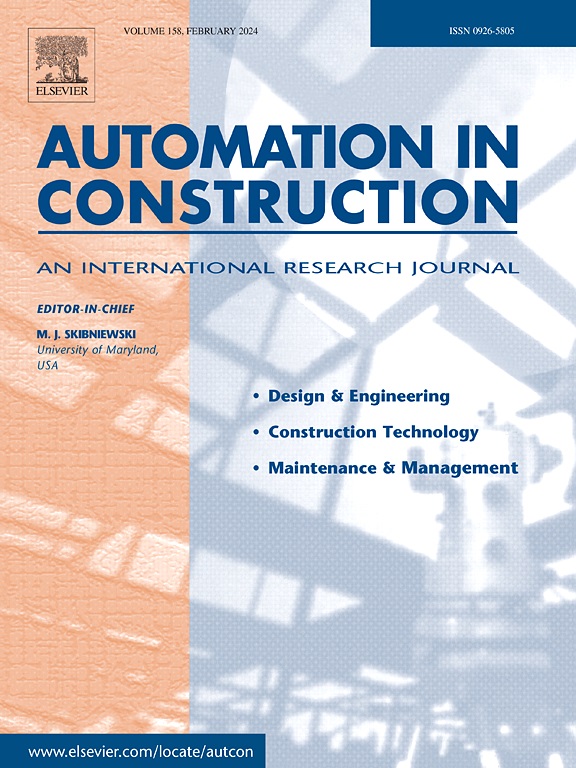Assessment of construction workers' fall-from-height risk using multi-physiological data and virtual reality
IF 9.6
1区 工程技术
Q1 CONSTRUCTION & BUILDING TECHNOLOGY
引用次数: 0
Abstract
Efficient identification of at-risk construction workers is crucial for reducing fall-from-height (FFH) accidents. However, current methods of evaluating worker FFH risk rely on manual inspections, which are ineffective because of the complex nature of construction sites. To address this issue, this paper presents a technique for FFH risk assessment using physiological data. A virtual reality experiment with three FFH risk scenarios was conducted, during which four categories of physiological data were recorded. Using the physiological data and machine learning algorithms, FFH risk classification models were developed. Three key findings are as follows. (1) All four physiological metrics showed significant changes in response to varying FFH risk levels (2) EEG was the most effective physiological metric for FFH risk assessment, achieving a test accuracy of 0.924 (3) Combining all four physiological categories provided the highest accuracy of 0.998. The findings demonstrate the feasibility of using physiological signals for effective FFH risk assessment.
基于多生理数据和虚拟现实的建筑工人高空坠落风险评估
有效识别处于危险中的建筑工人对于减少从高处坠落(FFH)事故至关重要。然而,目前评估工人FFH风险的方法依赖于人工检查,由于建筑工地的复杂性,这种方法是无效的。为了解决这一问题,本文提出了一种利用生理数据进行FFH风险评估的技术。对三种FFH风险场景进行了虚拟现实实验,记录了四类生理数据。利用生理数据和机器学习算法,建立了FFH风险分类模型。以下是三个主要发现。(1)四种生理指标在不同的FFH风险水平下均表现出显著的变化;(2)脑电图是FFH风险评估最有效的生理指标,测试准确率为0.924;(3)四种生理指标的综合准确率最高,为0.998。研究结果证明了利用生理信号进行有效FFH风险评估的可行性。
本文章由计算机程序翻译,如有差异,请以英文原文为准。
求助全文
约1分钟内获得全文
求助全文
来源期刊

Automation in Construction
工程技术-工程:土木
CiteScore
19.20
自引率
16.50%
发文量
563
审稿时长
8.5 months
期刊介绍:
Automation in Construction is an international journal that focuses on publishing original research papers related to the use of Information Technologies in various aspects of the construction industry. The journal covers topics such as design, engineering, construction technologies, and the maintenance and management of constructed facilities.
The scope of Automation in Construction is extensive and covers all stages of the construction life cycle. This includes initial planning and design, construction of the facility, operation and maintenance, as well as the eventual dismantling and recycling of buildings and engineering structures.
 求助内容:
求助内容: 应助结果提醒方式:
应助结果提醒方式:


